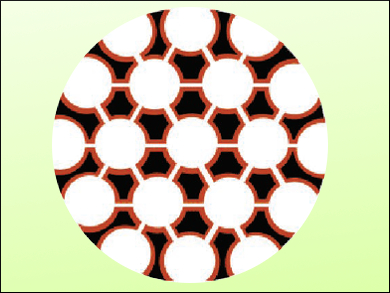Lithium-ion batteries are commonly used in portable electronics. To improve their capacity, new electrode materials are needed. These materials must be cost-effective, electrically conductive, and resist volume changes during the lithiation and delithiation cycles.
Xinliang Feng, Techincal University Dresden, Germany, Klaus Müllen, Max Planck Institute (MPI) for Polymer Research, Mainz, Germany, and colleagues have developed hierarchically hollow core–shell MnO2/C hybrid spheres (pictured) as an anode material for lithium-ion batteries. To construct the spheres, the researchers first prepared mesoporous carbon spheres (MCSs). They prepared a polyaniline precursor, mixed with SiO2 nanoparticles as templates for the pores, which they carbonized and etched to remove the silica. The MCSs were then coated with MnO2 by reacting the carbon surface with KMnO4.
The carbon framework (black) improves the conductivity, while the manganese dioxide (red) has space to expand upon lithium uptake. The material has good mechanical stability, allows electrolyte transport, and exhibits a large specific capacity and long-term cycling stability. According to the researchers, this hierarchically hollow structure can be extended to other electrode materials.
- Constructing Hierarchically Hollow Core-Shell MnO2/C Hybrid Spheres for High-Performance Lithium Storage,
Gang Wang, Yuhan Sun, Debao Li, Wei Wei, Xinliang Feng, Klaus Müllen,
Small 2016.
DOI: 10.1002/smll.201601403




